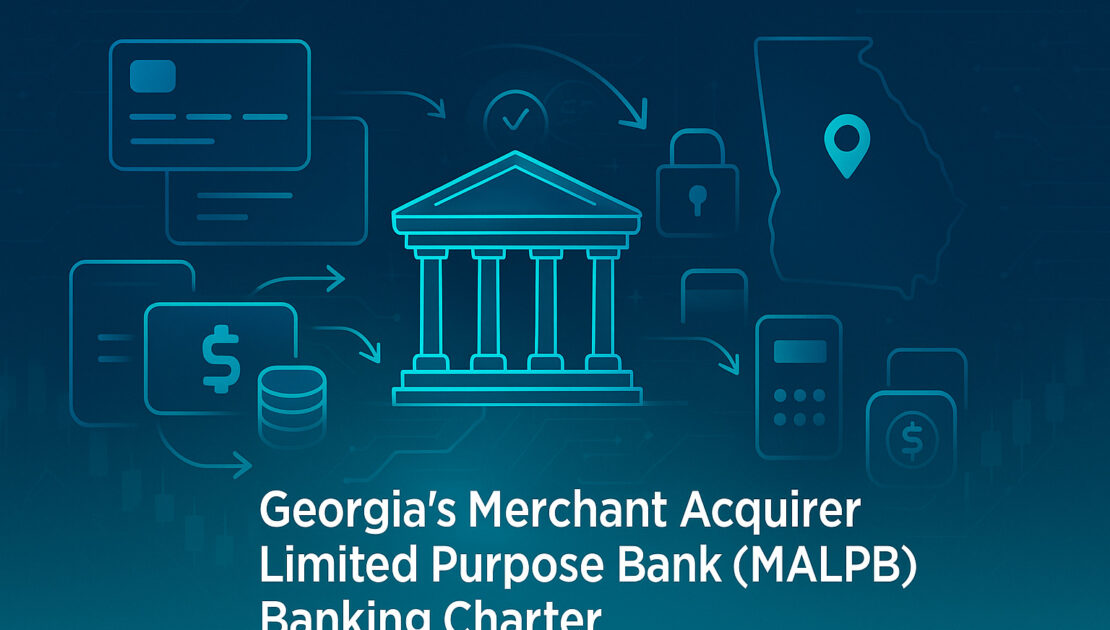Georgia’s New Payments Bank Charter Sparks Competitive Rush

Georgia’s innovative Merchant Acquirer Limited Purpose Bank (MALPB) charter is gaining traction in the payments industry. This special-purpose banking credential empowers payment processors to directly connect with credit card networks—like Visa and Mastercard—without the need for a sponsoring bank partner.

Rising Adoption
• Fiserv was the first to be approved for the MALPB charter, officially launching processing operations in early 2025.
• Stripe followed, receiving approval in July 2025.
• Beyond these two, a third company has officially applied, and a fourth has expressed interest—underscoring high industry demand.
Why It Matters
• Cost Leadership: By eliminating the traditional bank intermediary, companies like Fiserv can reduce processing costs and pass savings to merchants.
• Full Transaction Control: MALPB holders maintain end-to-end authority over payments, minimizing third-party risk.
• Regulatory Oversight: The Georgia Department of Banking and Finance closely monitors applicants for management quality, capital sufficiency, and compliance readiness.
Why Banks in the U.S. Mainland and Puerto Rico Should Pay Attention
1. Mainland Banks: Innovation & Competitiveness
• New Contest for Processing Services: As non-bank entities disrupt traditional banking models, established banks may need to innovate in custody, settlement, or value-added services to remain relevant.
• Potential for Partnerships: Banks could offer complementary services—such as liquidity solutions, risk management, or regulatory compliance support—to MALPB players.
2. Puerto Rico-Based Banks: Ideal Launchpad for Cross-Border Expansion
Regulatory Edge Planning & Licensing
As a U.S. territory, Puerto Rico’s banks operate under federal building blocks like FDIC insurance and federal oversight—granting them legitimacy and alignment with U.S. systems. They can replicate or adapt charter models like Georgia’s under similar regulatory climates.
Cross-Border Business Bridging
With strong economic and cultural ties to Latin America and beyond, Puerto Rican banks can serve as operational hubs—designing stablecoin-based transfers, cross-border settlement services, and regional merchant acquiring solutions with U.S. regulatory alignment.
Tiered Service Ecosystem
Puerto Rican institutions might offer:
• Licensed payment processing platforms styled after MALPB models.
• Integrated banking infrastructure, including trade finance, remittances, and merchant underwriting.
• Pilot sandbox collaborations with fintechs and card networks under regulatory supervision.
Regulatory Partner & Standard Setter
By engaging proactively with regulators—shaping policy, advocating for nuanced charter frameworks, and demonstrating operational readiness—these banks can become trusted entities in digital finance innovation.
Article Summary
| Key Area | Mainland Banks vs. Puerto Rican Banks |
| Regulatory Foundation | Mainland: Manage disruption from new players | Puerto Rico: Build MALPB-like services under U.S. oversight |
| Opportunity for Services | Mainland: Offer complementary infrastructure and risk tools | Puerto Rico: Create cross-border payment services leveraging U.S. structure |
| Strategic Positioning | Mainland: Defend or innovate to stay relevant | Puerto Rico: Lead in a niche, compliant, and innovative banking model |
| Regulatory Role | Mainland: Adapt to new charter ecosystems | Puerto Rico: Influence and shape future digital finance regulations |
Conclusion
Georgia’s MALPB charter is more than a revamped bank model—it’s a strategic turning point. As significant payments players like Fiserv and Stripe seize this opportunity, traditional banks must adapt.
Meanwhile, Puerto Rico’s unique position as a U.S. territory with regional connectivity provides a fertile testing ground for innovative, regulation-aligned banking models. Institutions there could offer new digital finance services—compliant, competitive, and cross-border in scope—setting the stage for a new wave of U.S.-regulated fintech leadership.

